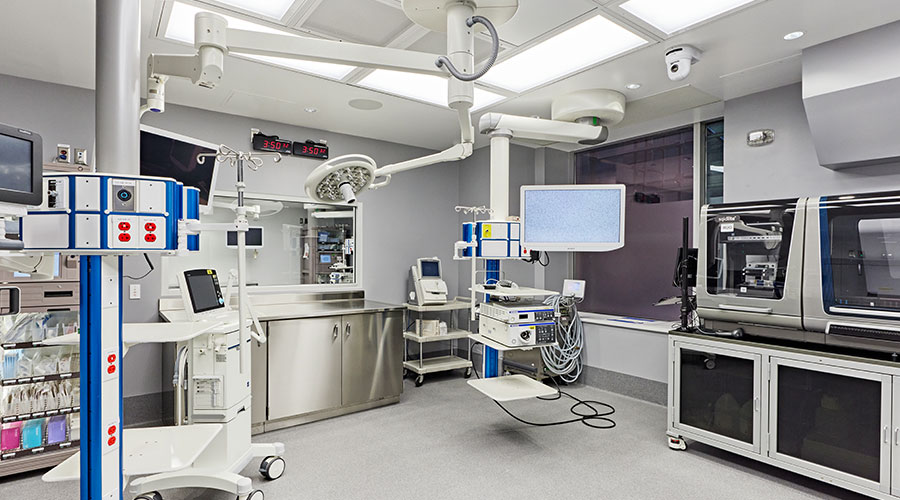From diagnosis to treatment, Artificial Intelligence and machine learning continue to drive improvements in nearly every facet of patient care.
Among the areas where AI is transforming healthcare is within the arena of patient experience. With the rise of consumerism in healthcare, many patients comparison shop, read online reviews, and consult with friends before choosing a care location. Today’s hospital administrators are tasked with distinguishing their facility from competitors by closely monitoring the entire patient experience and closing care gaps.
A thorough analysis of the patient journey often yields numerous opportunities to improve communication and create a more seamless experience. This is especially true for patients managing two or more chronic illnesses who may need additional communication about care plans and referrals. That’s why leading health systems are adopting a solution frequently utilized in the retail sector, where customer experience is tantamount: AI enabled mobile chatbots.
In fact, throughout sectors, AI has simplified previously lengthy communication processes. Airlines enlist AI enabled mobile chatbots to send flight delay notifications directly to customers’ mobile phones, and if you’ve ever paid a bill via text message, you’ve undoubtedly come across industry-specific AI. The growing trend is backed by data. Research shows 64% of consumers want to reach the businesses they interact with via mobile messaging, yet health systems have engaged just 2% of their patients with mobile solutions.
Previous solutions include costly patient portals and downloadable apps. Data shows that consumers stick to five apps, and often delete others. And although portals allow patients to view their health information and reach providers, chatbots create an easier and faster method of accessing care teams.
AI chatbots close care gaps by automating redundant processes. Care teams can share directions to the facility or update emergency room wait times directly to the patient’s mobile phone via text message. Chatbots assist patients with navigating a facility. Patients in the ED can inquire via text “Where is the surgical check-in desk?” and receive location-specific information. What’s more, chatbots are scalable and HIPAA compliant. Whether a practice serves a rural patient population or an extensive metropolitan health system, chatbots provide a communications strategy that bypasses costly apps and patient portals.
Much of the success of chatbots in healthcare is due to the common denominator between the 18 and the 80-year-old patient—both frequently use text messaging in their daily lives. Although statistics of high smartphone ownership among younger generations are not surprising, according to recent findings from the Pew Research Center, 85% of Americans over 65 years old own a mobile phone as well. The data reveals a unique opportunity for health systems serving aging patient populations, and patients more likely to be managing co-morbidities.
By leveraging smartphones and mobile devices, care teams can reach patients on-the-go, and regain the time needed to focus on high-value, top-of-license activities.
Chatbots activate the patient experience and process a range of intake and questionnaire-related tasks. Paired with a Care Navigator who provides the human connection and manages a secure dashboard, chatbots allow care teams to edit messages and send a range of notices from emergency room wait times, appointment reminders, directions to the healthcare facility, medication compliance, and post-op care plans, all personalized and automated.
Communication is a two-way street. Patients who would otherwise be frustrated waiting on hold to connect with a provider can text the care team directly, receive answers to frequently asked questions, or report an acute care event. The effect is better care and recouped revenue. It’s estimated that disengaged patients cost $33 billion a year in avoidable hospital admittances, higher treatment costs, low prescription adherence, and preventable deaths.
Removing barriers to care
The combination of advanced mobile technology and specialized human services optimize patient engagement before, during, and after visits. Providers with busy schedules can deploy chatbot technology to learn more about their patients’ behavior in between visits, and facility managers can remind patients where to find the café—a simple gesture that can improve patient experience during unexpected care events. The conversational data is then aggregated and securely stored for administrator analysis. In this regard, chatbots not only close gaps in communication but also reveal what types of communication and language garners the most patient responses.
Pairing mobile technology with care navigators also helps providers achieve value-based and population healthcare goals. In the new era of the digitally-connected consumer, chatbots extend the capability of providers and hospital administrators to deliver high-quality patient care across the populations they serve. The conversational platform is especially useful in the Emergency Department, a caring environment notorious for being confusing and anxiety-inducing for patients. With specialized navigators deploying chatbots, ED physicians and care teams are free to deliver high-quality clinical care.
While many health systems rely on costly patient portals and mobile apps that patients sign up for and often abandon or delete, chatbots create a unique opportunity to improve patient experience and drive brand loyalty, with a personalized touch. With healthcare facilities facing margin pressure, having a low cost, integrated AI tool to connect with patients throughout the care continuum is a game changer. AI chatbots radically improve the level of outreach, engagement and most importantly, the quality of care.
Kyle Cooksey is the President of CareThrough, a subsidiary of HealthChannels.

 Thousands of Healthcare Workers Laid Off
Thousands of Healthcare Workers Laid Off Construction Tops Off at Hackensack Meridian Health and Wellness Center
Construction Tops Off at Hackensack Meridian Health and Wellness Center 8 Operational Considerations for All-Electric Central Plants
8 Operational Considerations for All-Electric Central Plants Novant Health Breaks Ground on New Facilities in South Carolina
Novant Health Breaks Ground on New Facilities in South Carolina Building an Organ Regeneration Lab at UHN's Toronto General Hospital
Building an Organ Regeneration Lab at UHN's Toronto General Hospital